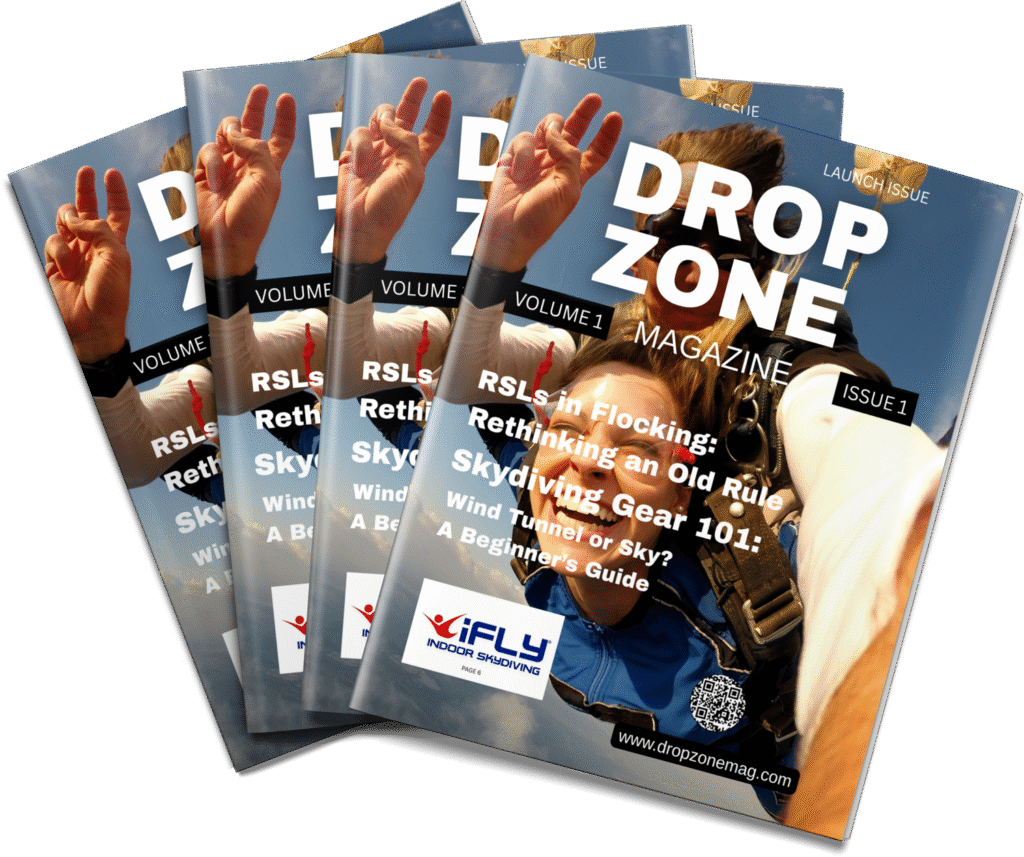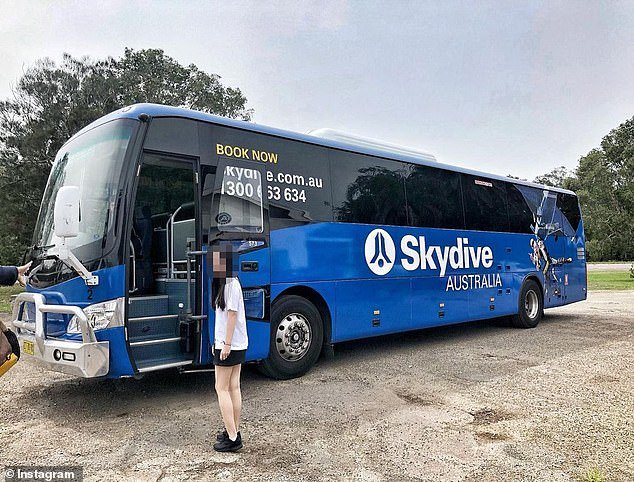BOB BYARS NETWORK – DIGITAL ISSUE MEDIA LLC
JACKSONVILLE AREA NEIGHBORHOOD MAGS

DESTINATIONS MAGAZINE NETWORK

A skydiving drop zone (DZ) is a designated area where parachutists take off in aircraft and land under parachutes, serving both recreational skydivers and military personnel. These locations are often situated adjacent to small airports, sharing facilities with other general aviation activities
LAUNCH ISSUE JAN 10 2026

DROP ZONE MAGAZINE
A “skydiving drop zone magazine” refers to a periodical publication specifically catering to the skydiving community, often associated with or distributed at a skydiving drop zone. These magazines serve as a vital communication and information hub for skydivers, instructors, and enthusiasts, covering a wide array of topics relevant to the sport
COMING IN FALL 2025 , LOOKING FOR SPONSORS

PUBLISHER – SHAWN
ADVERTISING – UNCLE BOBBY
EDITOR – BASH
PRODUCTON – NEEKO, DOMINIQUE
MERCH SHOP – SHANNAH, CARMEN
SEO – SOCIAL MEDIA – A HIRE
MAID/GOPHER = BETH SANDS
SHOP EXAMPLE
https://store.uspa.org/
WE OWN THE MAGAZINE BRAND
www.dropzonemag.com
www.dropzonemagazine.com
BALL CAP

SWEAT SHIRT

POTENTIAL SPONSORS

web site

web site

web site

web site

web site

web site
web site
web site
web site
web site
web site
web site
web site
web site
web site
web site
web site

Upcoming articles for Drop Zone Magazine
A parachute drop zone magazine serves as a vital resource for the skydiving community, offering a blend of educational content, safety information, community news, and entertainment. The articles within such a publication should cater to a diverse audience, from novice jumpers to seasoned professionals, and cover a wide array of topics relevant to the sport. The overarching goal is to foster a culture of safety, continuous learning, and camaraderie among skydivers.
Safety and Training
Safety is paramount in skydiving, and a significant portion of the magazine’s content should be dedicated to this aspect. Articles can delve into various facets of safety, from equipment maintenance to emergency procedures.
Equipment Care and Inspection
Detailed guides on inspecting and maintaining skydiving equipment are crucial. This includes articles on parachute packing techniques, harness and container inspection, altimeter calibration, and AAD (Automatic Activation Device) functionality checks. For instance, an article might explain the proper way to inspect a main canopy for tears or damage, emphasizing the importance of pre-jump checks (The Parachute Manual: A Technical Treatise on Aerodynamic Decelerators). Discussions on the lifespan of various components, such as lines and fabric, and when to consider replacement, are also highly relevant. The physics behind parachute deployment and the forces involved can be explained using equations. For example, the drag force (FD) on a parachute can be expressed as:
FD=12ρv2CDA
where ρ is the air density, v is the velocity, CD is the drag coefficient, and A is the reference area of the parachute (Aerodynamics for Naval Aviators). Understanding these principles can help skydivers appreciate the engineering behind their gear.
Emergency Procedures
Comprehensive articles on emergency procedures are indispensable. These can cover topics such as canopy malfunctions (e.g., twists, line overs, horseshoe malfunctions), cutaway procedures, reserve parachute deployment, and landing in off-field areas. Step-by-step guides, perhaps with illustrative diagrams, can reinforce critical actions. The psychological aspects of dealing with emergencies, such as maintaining composure under stress, can also be explored (Skydiving: The Art and Science of Freefall). Case studies of real-life incidents, analyzed to extract lessons learned, can provide valuable insights without sensationalizing the events.
Advanced Training Techniques
For experienced jumpers, articles on advanced training techniques can be highly engaging. This includes discussions on freefall maneuvers (e.g., tracking, angle flying, dynamic flying), canopy piloting skills (e.g., high-performance landings, accuracy landings), and formation skydiving strategies. The physics of human flight, including concepts like lift, drag, and thrust generated by body position, can be explained. For example, the lift-to-drag ratio is critical for tracking performance (Parachuting: The Skydiver’s Handbook). Articles could also feature interviews with world-renowned coaches and competitors, sharing their insights and training methodologies.
Community and Culture
A drop zone magazine should also foster a sense of community and celebrate the unique culture of skydiving.
Drop Zone Spotlights
Features on different drop zones around the world or within a specific region can be highly popular. These articles can highlight the unique characteristics of each drop zone, including its facilities, aircraft, local attractions, and the community of jumpers it attracts. Interviews with drop zone owners, instructors, and long-time regulars can provide a personal touch (The Skydiver’s Handbook).
Skydiver Profiles
Profiling individual skydivers, from beginners who have just completed their AFF (Accelerated Freefall) course to seasoned veterans with thousands of jumps, can be inspiring. These profiles can share their motivations, challenges, memorable jumps, and contributions to the sport. This helps to humanize the sport and create relatable figures for readers.
Event Coverage
Reporting on skydiving events, such as boogies, competitions (e.g., national championships in formation skydiving, freefly, or canopy piloting), and world records, is essential. These articles can include vivid descriptions, high-quality photographs, and interviews with participants and organizers. The competitive aspect of skydiving, and the dedication required to excel, can be a source of motivation for many.
Technical and Scientific Aspects
Skydiving is a sport deeply intertwined with physics, engineering, and physiology. Articles exploring these technical and scientific dimensions can appeal to a curious readership.
Aerodynamics of Freefall and Canopy Flight
In-depth explanations of the aerodynamic principles governing freefall and canopy flight can be highly educational. This includes discussions on terminal velocity, air resistance, lift generation by canopies, and the effects of atmospheric conditions on jump performance. The forces acting on a skydiver in freefall can be analyzed, including gravity (Fg=mg) and air resistance (FR=12ρv2CDAbody), where m is mass, g is acceleration due to gravity, and Abody is the skydiver’s frontal area (Fundamentals of Aerodynamics).
Parachute Design and Innovation
Articles on the evolution of parachute design, from early round canopies to modern high-performance wings, can be fascinating. This can include discussions on materials science, manufacturing processes, and the engineering challenges involved in creating safer and more efficient parachutes. Interviews with parachute designers and manufacturers can provide unique insights into the industry.
Human Physiology in Skydiving
Exploring the physiological effects of skydiving on the human body can be an interesting topic. This includes discussions on altitude sickness, oxygen deprivation, the impact of G-forces during deployment, and the psychological responses to extreme sports. Advice on physical conditioning and nutrition for skydivers can also be included (Human Factors in Aviation).
Lifestyle and Travel
Beyond the technical aspects, skydiving is also a lifestyle and often involves travel.
Skydiving Destinations
Articles featuring popular skydiving destinations around the world, detailing the unique experiences they offer, local regulations, and travel tips, can inspire readers to explore new drop zones. This can include information on visa requirements, accommodation, and other activities available in the region.
Gear Reviews and Recommendations
Objective reviews of new skydiving gear, including parachutes, containers, altimeters, and accessories, can be very helpful for readers looking to make informed purchasing decisions. These reviews should be unbiased and focus on performance, safety features, and value for money.
Photography and Videography
For many skydivers, capturing their experiences through photography and videography is an integral part of the sport. Articles on aerial photography techniques, equipment recommendations, and editing tips can be highly valuable. This can include discussions on camera placement, lighting, and storytelling through visuals.
Historical Perspectives
Understanding the history of skydiving can provide context and appreciation for the sport’s evolution.
Pioneers of Skydiving
Features on the pioneers of skydiving, from early parachutists to those who revolutionized freefall and canopy flight, can be inspiring. These articles can delve into their contributions, challenges, and the impact they had on the sport (The Parachute Manual: A Technical Treatise on Aerodynamic Decelerators).
Evolution of Skydiving Disciplines
Tracing the evolution of different skydiving disciplines, such as formation skydiving, freefly, and canopy piloting, can illustrate how the sport has diversified and grown over time. This can include historical photographs and anecdotes from those who witnessed these changes firsthand.
By covering these diverse topics with depth and accuracy, a parachute drop zone magazine can serve as an invaluable resource, fostering a knowledgeable, safe, and engaged skydiving community.
